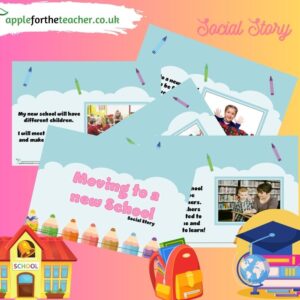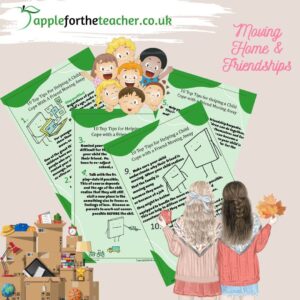The important thing to remember is no two children with autism are the same.
Each child will have individual needs and abilities. Some children may have other conditions or learning difficulties present which can be related to being on the autistic spectrum, with varying levels of support being necessary to meet the needs of different children.
Challenges which may occur in the school setting and how to deal with them.
Routine
Children on the autistic spectrum often need a clear routine, to help them to adjust to the different environments around them. A way of ensuring structure is to provide visual timetables, these can be in picture/illustration form, or written form, giving children a clear visual of what is happening throughout the day. Each activity can be taken off or crossed off once it is complete if needed, showing that it is getting nearer to the end.

https://applefortheteacher.co.uk/download/visual-timetable-cards/
Children can also benefit from taking part in small step transitions, when something new is going to happen.
For example, if there is a new intervention beginning in a different room. It can be supportive to children with autism to make a small album showing photographs of the place this will happen and discuss this first. This can be looked at many times before the next stage of taking the child to the room/place, extending the stay in small stages.
Unstructured Times – ie play times/lunch breaks
Some children who are on the autistic spectrum can find these times difficult, this can be related to the difficulties with social and communication skills, or it can be related to sensory needs being over stimulated or lacking.
Some children can find the noise levels in the dining room too much to cope with, or a particular food on their plate which they can’t tolerate can result in a meltdown. They can find the lack of structure difficult to cope with, they can also feel socially isolated as ‘understanding’ others can be difficult, resulting in feelings of being disconnected with peers.
Ways to support children in these times can be:-
Organising lunchtime clubs which will peak the interests of the children who struggle with unstructured times.
Ensure there is a higher level of supervision in staffing, making sure they have a good understanding of Autism, so they can look for triggers, or help the child in calming strategies.
Use social stories to support children who struggle with understanding social aspects with their peers, to give them a little more of a foundation in social situations.
Some children really do just find social interaction too much to cope with in large numbers. Providing a ‘safe space’ for a very small number of children to play near each other and communicate, in a quiet area can really help.
Reducing Stress Levels
Keeping stress to a minimum for everyone, is key. Children with autism can experience sudden anxiety, this happens when the child becomes suddenly overwhelmed by external stimuli. These ‘meltdowns’ can present themselves in a number of ways, such as shouting, throwing themselves on the floor, hitting and lashing out, screaming, or even running away. It is a good idea to log when meltdown’s happen and analyse what was happening at that time, this will highlight any patterns and give an idea of what the triggers were, thus providing opportunities to put calming strategies in place or work with the child to prevent the stress levels from rising to this level in the future. It will also give the support worker/teacher an opportunity to prevent the trigger before it happens, or recognise the beginning of an anxiety meltdown.
Personal Passport Of Needs
It is a good idea in a classroom to complete a Personal Passport of needs for children who have specific needs. This should be accessible to anyone working with children with specific needs, giving all staff the known trigger information and calming down strategies to best support all children. Ensuring consistency in meeting every child’s needs.
Available Free from the Apple For The Teacher Website Personal Passport Of Needs Template, link below:-

https://applefortheteacher.co.uk/wp-content/uploads/2018/07/My-personal-passport-of-needs-SEN.pdf
Transition Times
Children on the Autistic Spectrum can find transitioning between classes difficult, the noise levels rise and the corridors are busier.
A helpful strategy can be to allow a child who finds this too difficult to leave the classroom and make the transition 5 minutes before the rest of the class, before the corridors become busy. They can also be paired up with a buddy to provide extra support.
Writing/School Work
Children on the autistic spectrum can sometimes ‘not see the point of writing things down’ when they can just verbalise it, or communicate the answer. Short, pacey tasks can often help with this, especially when linking tasks to interests where possible. To encourage engagement and participation. Recording on laptop or PC can also be a good way to support children who are reluctant to write.











